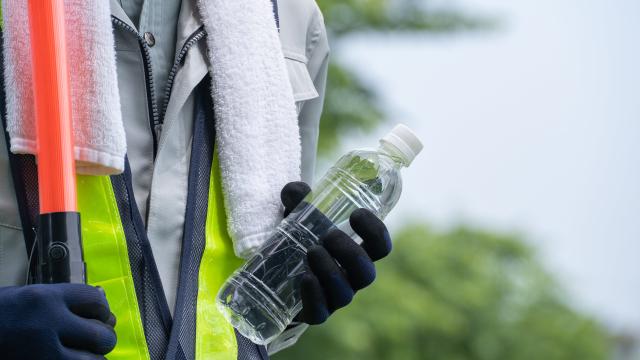When it’s a bajillion degrees with high humidity, the heat can feel like a heavy blanket smothering you. As it turns out, the combination of heat and humidity can also increase your risk for heat stroke.
How dry heat is different from humid heat
When it comes to dry versus humid heat, the major difference is that humidity prevents sweat from evaporating off the surface of your skin, which is what helps your body cool down.
“When it’s much drier, it’s much easier for any perspiration to leave your body quickly,” said Neil Gandhi, an emergency physician at Houston Methodist Hospital, where the heat and humidity are intense. “Extra humidity makes it more difficult for you to sweat it off effectively.”
When sweat sticks to your skin rather than evaporate, that makes you feel hotter than you actually are. The combination of the ambient temperature and humidity is what goes into the heat index, which is what the temperature feels like. The higher the combination of heat and humidity, the higher the heat index.
How to avoid heat stroke
Gandhi tends to see an uptick in heat stroke cases at the beginning of the summer when people are just starting to get used to the hotter temperatures, during heat waves when the heat index might be especially high, or at the start of the school year when football practice begins.
When it comes to avoiding heat stroke, one important practice is heat acclimatization, which is the process of letting your body gradually get used to the hotter temperatures. Giving your body time to adjust over the course of days or week can prompt physiological adaptations to the heat, such as increased sweat efficiency, increased blood flow to the skin, and the ability to move around at a lower heart rate and core temperature. “Your body is an amazing machine,” Gandhi said. “The more time it has to acclimate, the better.”
Of course, other ways to avoid heat stroke include limiting your exposure to extreme heat, like by staying indoors during the hottest part of the day, and by staying hydrated. Plain water works just fine for hydration, although if you find that drinking fluids with salts in it helps you feel better, “you should absolutely keep doing it,” Gandhi said. “If we look at the evidence, salts are not detrimental, which means that small amounts of salts won’t hurt people. But at a physiological level, water is just as effective as any sports drink.”
Know the warning signs of heat stroke
The warning signs of heat stroke can include confusion, loss of consciousness, vomiting, hot, dry skin, profuse sweating, and a very high body temperature. If you start noticing these signs, either in yourself or others, then you need to seek help immediately. Be especially mindful of young children and older adults, as they’re extra susceptible to heat stroke.
“That is a true medical emergency,” Gandhi said. “That person needs to present to the emergency department right away. If not, the damage can be irreversible.” However, if caught early and treated appropriately, “the recovery is pretty good for most patients,” he said.

Leave a Reply
You must be logged in to post a comment.